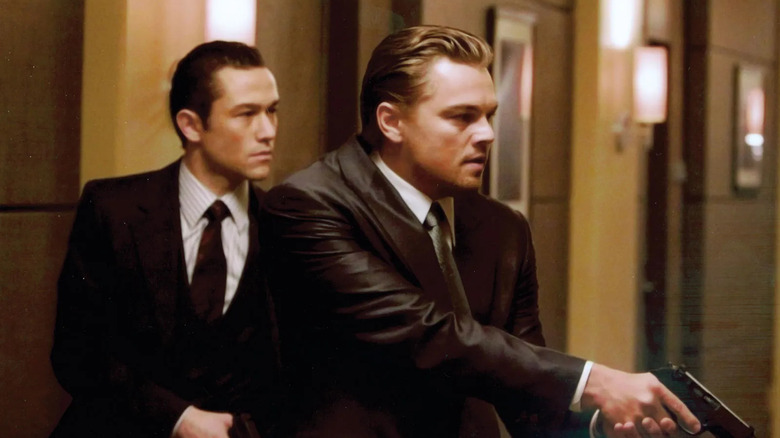
"It was all just a dream" is one of the most annoying plot twists that science fiction movies can use. Even if a great movie precedes it, revealing that nothing in the plot mattered is a pretty good way to leave your audience disappointed. That being said, dreams can be used effectively in science fiction films to foreshadow future events, reveal insights about the characters, and create interesting visual motifs. Even if dreams are occasionally used as a "cop-out," some of the best science fiction movies of all time rely on critical moments from inside a character's subconscious.
Any dream sequence that is taken out of context is bound to seem pretty strange. As Cobb (Leonardo DiCaprio) explains in Christopher Nolan's 2010 sci-fi action film, "Inception," there is always something that seems "off" during a dream. It's only when you wake up that you notice that something unusual was happening.
As any film buff knows, just because something is weird does not mean that it is good. "Weirdness" can either mean the brilliance of David Lynch or the incoherence of M. Night Shyamalan. Here are some of the weirdest dream sequences in sci-fi movies.
Anakin's Premonition — Star Wars: Episode III — Revenge Of The Sith
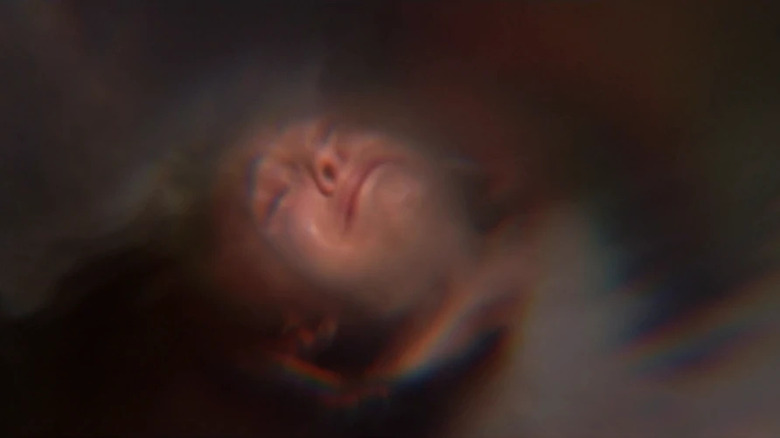
The "Star Wars" franchise explains away a lot of potentially confusing plot points with "the will of the Force." The Force often gives the Jedi and Sith visions of their future or memories from their past. Although the characters in the "Star Wars" franchise sometimes discuss what they are dreaming about, "Star Wars: Episode III — Revenge of the Sith" features one of the saga's oddest nightmare sequences. George Lucas uses this dream to emphasize a critical plot point involving Anakin Skywalker's (Hayden Christensen) turn to the dark side.
Anakin fears for the life of his wife, Padme Amidala (Natalie Portman). After Anakin and Obi-Wan Kenobi (Ewan McGregor) return from their mission to rescue Chancellor Palpatine (Ian McDiarmid) from General Grievous (voiced by Matthew Wood), Padme reveals to her husband that she's pregnant. Anakin suffers from disturbing nightmares in which Padme screams in pain. These sequences are very strange and feel just as melodramatic as the never-ending romantic subplot in "Star Wars: Episode II — Attack of the Clones."
These scenes are even stranger when you consider what takes place in the rest of the saga. In "Star Wars: Episode VI— Return of the Jedi," Leia (Carrie Fisher) tells Luke (Mark Hamill) that she remembers her mother. However, in "Revenge of the Sith," Luke is born first, and neither child gets to spend very much time with Padme before she dies.
Paul's Dream About The Emperor — Dune (1984)
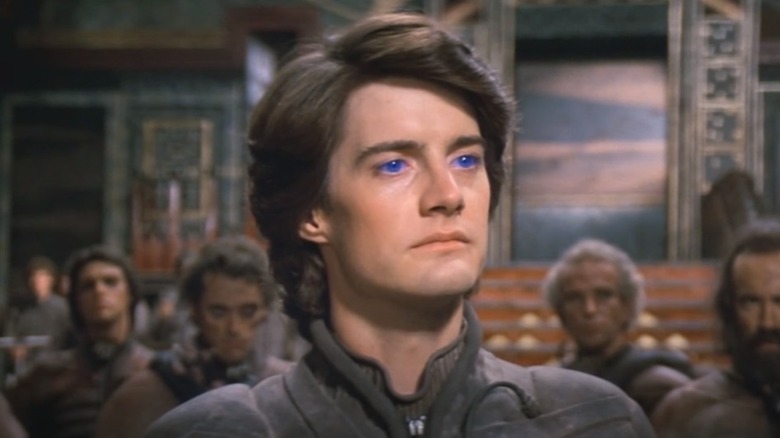
Even the biggest David Lynch fan may struggle to defend 1984's "Dune." Lynch himself disowned the film, as he felt that he had very little control over the final version that audiences saw in theaters. "Dune" is weird — even by Lynchian standards. Frank Herbert's original novel is a complex work of literature and trying to cram the entire story into one film makes it more confusing. Denis Villeneuve's 2021 adaptation of "Dune" is shorter than Lynch's version, telling only half of the same story.
Of all of the strange moments in Lynch's "Dune," the dream that Paul Atreides (Kyle MacLachlan) has about the evil Padishah Emperor Shaddam IV (Jose Ferrer) is one of the weirdest. The scene almost feels like an editing error. The audience already knows that the Emperor will be threatened by a powerful ruler, so it seems pointless for Paul to discover this in a dream.
Thankfully, the baffling nature of the dream sequences in "Dune" actually led to better things. The dream sequences in Villeneuve's version of "Dune" are much more coherent and do a better job at conveying critical pieces of information to Paul (Timothee Chalamet). Lynch is certainly no stranger to iconic sequences within the minds of his characters. He would go on to create some of the most haunting moments in "Twin Peaks" using dreams.
Cobb Tells Ariadne About Inception — Inception
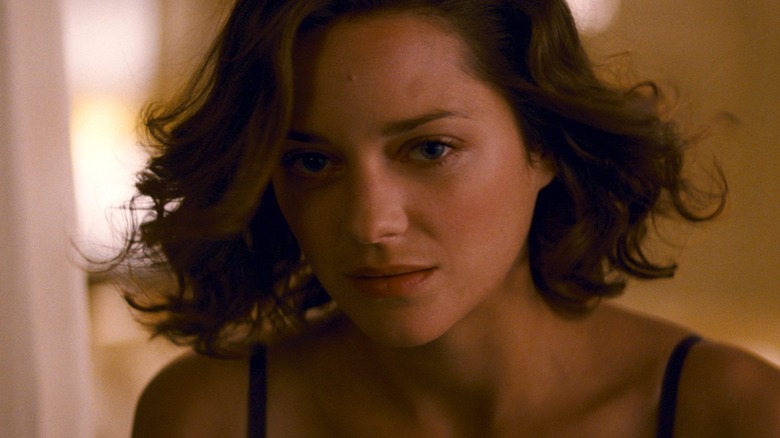
Christopher Nolan's "Inception" is a film that is literally about dreaming, so picking just one dream sequence from the film is a challenge. However, there's one plot point in the film that is just straight-up confusing. In the final act of the film, Cobb (Leonardo DiCaprio) reveals a critical piece of information to Ariadne (Elliot Page) that would have been nice to know earlier in the story. Cobb explains to Ariadne that he knows that the "Inception" process works because he used it in the past on his wife, Mal (Marion Cotillard).
While Cobb and Mal were experimenting with dream-sharing, their grasp on reality began to fade. To break them free, Cobb planted the idea in her mind that they were dreaming. Unfortunately, Mal believed him even after they exited the dream. Later, Mal dies by suicide because she thinks that she is still dreaming. A projection of Mal torments Ariadne throughout the film. Ariadne probably wishes that Cobb had confessed to his secret a little bit earlier.
The sequences involving Mal's projection are very strange compared to the rest of the film. "Inception" is very plot-heavy, but the scenes in which Mal's projection pops up seem like they are from a horror film. The flashbacks to Mal and Cobb's life inside the dream are also very romantic. Although Nolan is a genius when it comes to coming up with mind-blowing ideas, he's less successful at showing genuine human emotion.
If you or anyone you know is having suicidal thoughts, please call the National Suicide Prevention Lifeline by dialing 988 or by calling 1-800-273-TALK (8255).
The Knightmare — Batman Vs. Superman: Dawn Of Justice
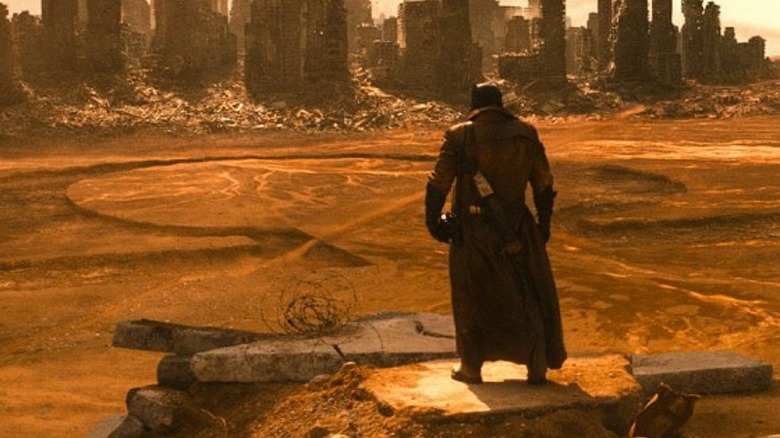
The theatrical version of 2016's "Batman v. Superman: Dawn of Justice" is one of the most confusing movies ever made. Zack Snyder's R-Rated "Ultimate Edition" of the film is much longer and gets rid of some of the logical inconsistencies. However, the version of "Batman v. Superman" that audiences saw for the first time was incoherent and strange. A baffling nightmare sequence highlights the problems with the theatrical cut.
After Bruce Wayne (Ben Affleck) attends a gala at LexCorp to steal critical information from the company's mainframe, he dreams of a post-apocalyptic future. In this dark vision, Bruce sees a world that has been destroyed by war. Bruce leads a rebel army against Superman (Henry Cavill), who has turned evil. What makes this moment even more confusing is that this scene is followed by a brief cameo by Ezra Miller as The Flash. The Flash tells Bruce that Lois Lane (Amy Adams) is the key and that he needs to gather the other members of the Justice League.
This scene was intended to set up Darkseid, who doesn't show up in the 2017 theatrical version of "Justice League" either. In Joss Whedon's version of the film, the main villain is Steppenwolf (Ciaran Hinds), another warrior from the planet Apokolips. DCEU fans had to wait until Snyder's version of the film was released on HBO Max to see Darkseid (Ray Porter).
Justin Timberlake Dances To The Killers — Southland Tales
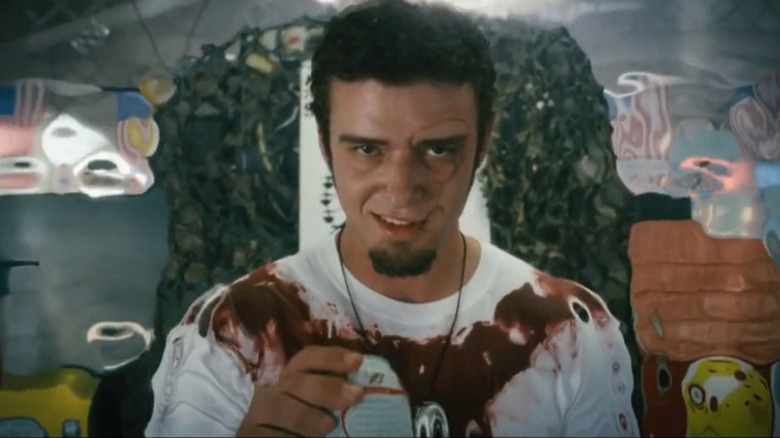
If you thought that Richard Kelly's directorial debut, "Donnie Darko," had some strange dream sequences, then you'll want to check out his second film, "Southland Tales." "Southland Tales" makes "Donnie Darko" feel straightforward by comparison. The bizarre, hallucinatory science fiction satire received one of the most negative reactions in the history of the Cannes Film Festival. As a result, the film wasn't released in theaters until a year later, and even then, Kelly had yet to complete his true vision.
"Southland Tales" has steadily garnered a cult following over the years. Ironically, the film's themes of political extremism, the dominance of celebrity culture, invasive government agencies, and experimental drug testing have only become more timely in the years since its release. While Kelly's cut of the film makes the story a little more understandable, it doesn't make the comedy beats any less strange. There's one particularly baffling sequence in which Iraq War veteran Private Pilot Abilene (Justin Timberlake) takes an experimental drug and has a vision of himself dancing with various nurses. Abilene lip syncs to The Killers' "All These Things That I've Done."
The only real explanation for this scene is in Kelly's comic book prequel, which reveals that Abilene was listening to the same song while he was in combat. Still, that doesn't explain why Kelly asked Timberlake (who is a great singer) to lip sync for the scene.
Picard's Locust Dream — Star Trek: First Contact
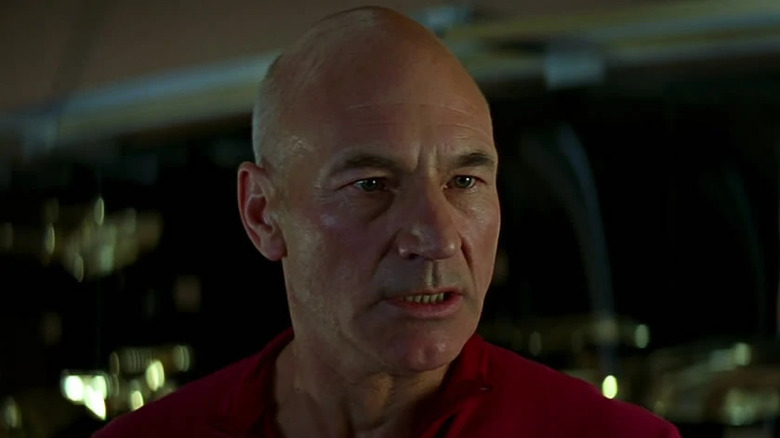
Unfortunately, the cast of "Star Trek: The Next Generation" never got the film franchise that they deserved. The stars of the original "Star Trek" only appeared in three seasons, so their films had much more room to expand on their stories. However, "The Next Generation" aired for seven seasons that fully fleshed out the cast. Many "Star Trek" fans agree that "The Next Generation" is the most complete and satisfying show in the franchise. However, creating a show so beloved created high expectations for subsequent films. What more was left for "The Next Generation" cast to do, and could a film surpass the high points of the show?
Ironically, the films starring "The Next Generation" cast failed because, in many cases, they felt like rehashes of storylines that had been featured in the series. Of the four "Next Generation" films, "Star Trek: First Contact" is the only one that stands out. The film brings back the show's most fearsome antagonist, the Borg. Captain Picard (Patrick Stewart) is still traumatized from his experiences with the Borg and has a startling nightmare that reminds him of his past.
While this is a critical moment in Picard's character arc, it comes off as rather goofy and unnecessary. Stewart is a great actor who can hint at Picard's internal struggles. They don't need to be shown explicitly.
The Talking Dinosaur — Jurassic Park III
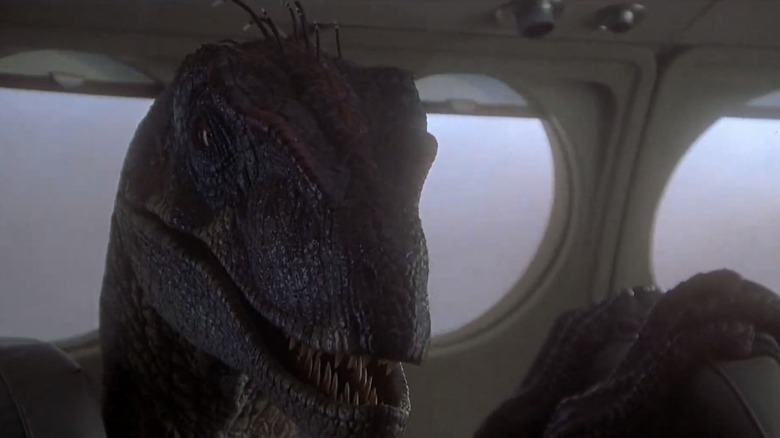
Steven Spielberg's 1993 film, "Jurassic Park," is a perfect summer blockbuster. Similar to what Spielberg accomplished with "Jaws," "E.T. The Extra-Terrestrial," and "Raiders of the Lost Ark," the original "Jurassic Park" is the perfect blend of action, heart, and horror. It never becomes violent to the point that it's in poor taste, but it never feels too goofy either. The premise is ridiculous, but Spielberg at least tries to adhere to some semblance of logic.
That's not something that any of the "Jurassic Park" sequels manage to do. The films get progressively sillier, and "Jurassic Park III" almost seems like a sci-fi B movie. Unlike the first two films, "Jurassic Park III" is not based on an original novel by author Michael Crichton. Screenwriters Peter Buchman, Alexander Payne, and Jim Taylor came up with a new story in which Alan Grant (Sam Neill) is called back to Isla Sorna for a new adventure. Grant is hesitant to return to an island where dinosaurs are roaming free. While sleeping on a plane, he has a dream about a velociraptor who says his name. It's one of the most unintentionally hilarious moments in the franchise.
This moment also underscores the problems with "Jurassic Park III." Audiences fell in love with Grant because he had enthusiasm, but in "Jurassic Park III," it seems like the only reason that Grant is there is because he is getting paid.
The Unicorn — Blade Runner
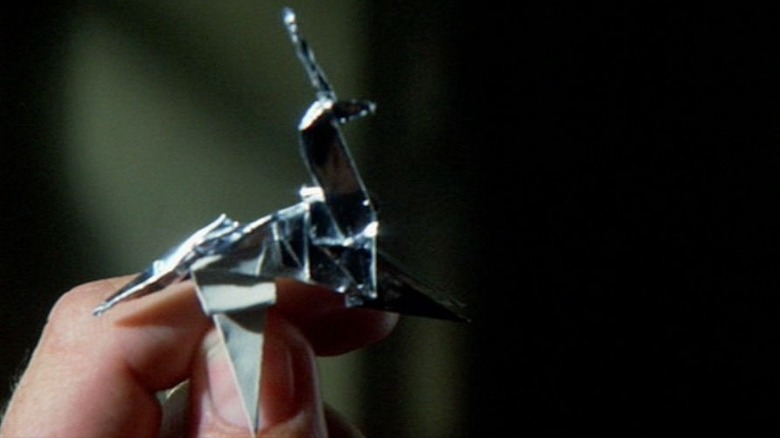
"Blade Runner" is regarded as a classic, but that wasn't always the case. Following a series of test screenings before the film's 1982 release, Warner Brothers grew concerned about the film's ambiguity and dark tone. Consequently, a voiceover featuring Harrison Ford's Rick Deckard was included to help "explain" the ambiguities of the story. Ford felt that it would only ruin the movie. Ridley Scott also had his issues with the version of "Blade Runner" that was released in theaters. Scott's director's cut, which wasn't released until 1992, makes many changes to the story. Most of Scott's work involved removing the studio's additions to the film, including the happy ending and voiceover. However, Scott also added another detail that offers clues about the film's biggest mysteries.
Scott includes a scene in which Deckard dreams about a unicorn running through a mystical forest. It feels like it is taken out of a completely different movie, and that's because it was. The unicorn scene was originally shot as test footage for Scott's 1985 fantasy film, "Legend." In "Blade Runner," police officer Gaff (Edward James Olmos) leaves behind an origami unicorn. This implies that if Gaff knows what Deckard is dreaming about, Deckard is also a replicant.
"Blade Runner" fans have long pondered whether Deckard is a replicant, but they didn't get any answers from "Blade Runner 2049," as that film doesn't directly address either interpretation of his identity.
Rey's Prophecy — Star Wars: The Force Awakens
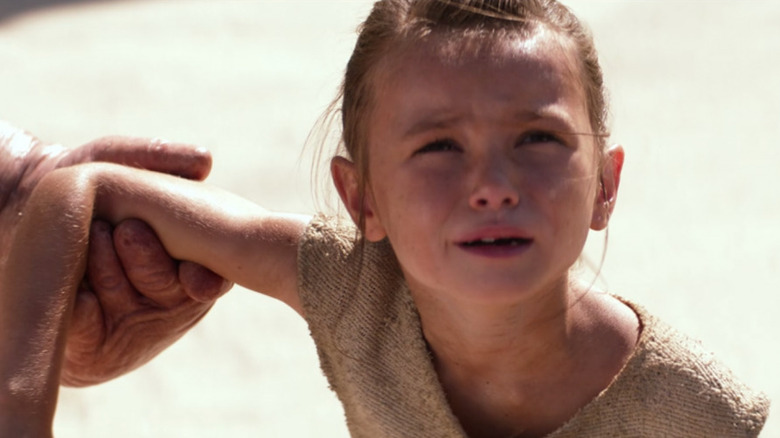
"Where does Rey come from?" was one of the biggest questions leading up to the release of 2015's "Star Wars: The Force Awakens." Many fans were convinced that Daisy Ridley's young hero would be related to one of the previously established characters in the franchise. This became a subject of major controversy after her backstory was revealed in "Star Wars: The Last Jedi," and then retconned in "Star Wars: The Rise of Skywalker."
In "The Last Jedi," Kylo Ren (Adam Driver) tells Rey that her parents were "nobodies," and that her powers cannot be explained by some sort of important lineage. What could have been a really interesting commentary on the pre-conceived notion of destiny was completely ruined in "The Rise of Skywalker" when Kylo Ren tells Rey that while her parents were "nobodies," her grandfather is Emperor Palpatine (Ian McDiarmid), who has returned from the dead. Ironically, the dream sequence in "Star Wars: The Force Awakens" works with both interpretations of Rey's past.
When Rey is exploring Maz Kanata's (Lupita Nyong'o) location, she is called to an ancient relic, Luke Skywalker's lightsaber. Rey has a vision of her childhood in which she is marooned on Jakku by her parents. Perhaps, her parents flee because they are selfish nobodies as director Rian Johnson thought. However, they also could be dropping Rey off on the desert planet so that she wouldn't be detected by Palpatine.
The Chestburster — Aliens
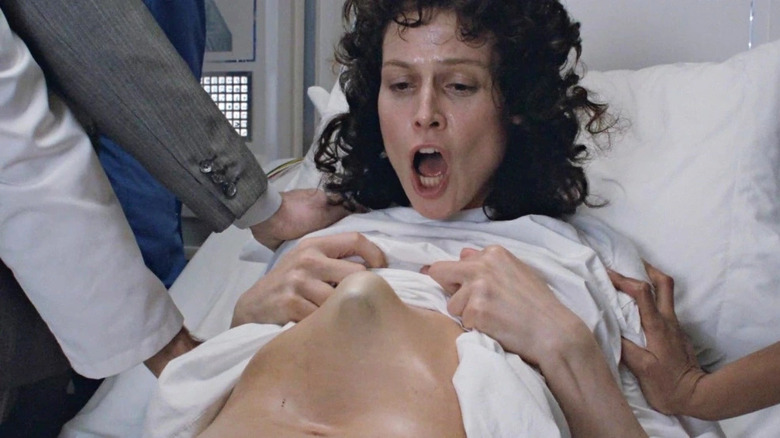
The debate over which film in the "Alien" franchise is the best is a contentious one among science fiction fans. Which film edges out the other? 1979's "Alien" or 1986's "Aliens?" What makes this debate so fun is that the films are very different. Ridley Scott started the series off as a dark, atmospheric horror franchise. "Alien" feels like "Jaws" set in outer space. However, James Cameron turned "Aliens" into a complete summer spectacle with action-packed set pieces, memorable one-liners, and plenty of heart. The films complement each other very well. "Alien" deals with themes of birth, female anxiety, and sexuality, while "Aliens" deals with themes of motherhood, post-traumatic stress disorder, and communion.
While the tonal differences make them more interesting, Cameron did include one horror-themed moment in "Aliens." While she is being attended by medics, Ripley (Sigourney Weaver) has a flashback to her experiences on the Nostromo. She dreams that a Xenomorph bursts out of her chest. It's a shocking moment that reminds both Ripley and the audience of the dangers that are out there.
Ironically, it's also the scariest moment in the film. "Aliens" features some very suspenseful sequences once Ripley starts her new mission, but they aren't quite as traumatizing as the intimate threat of the chestburster.
Hunchback Babies — Brazil
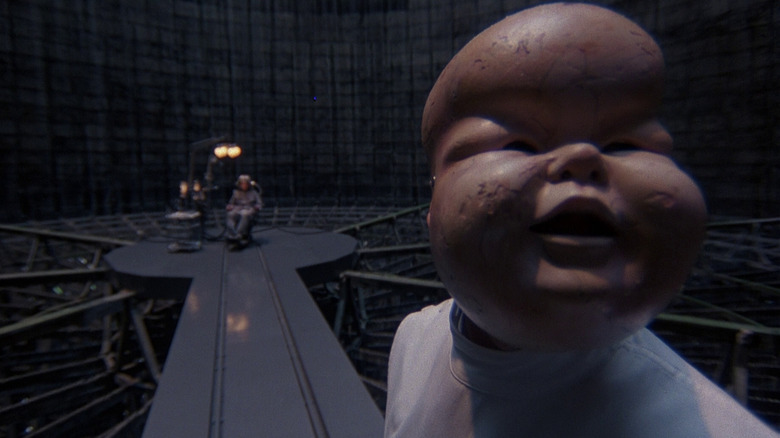
You can't make a list of the weirdest filmmakers of all time without including Terry Gilliam. The "Monty Python" alum is renowned for his strange, demented genre films that frequently use obscure and baffling imagery. Of all of Gilliam's films, 1985's "Brazil" is heralded as his masterpiece. The film takes place in a dystopian society where the world has become overrun by technology and bureaucracy. Lowly bureaucrat Sam Lowry (Jonathan Pryce) begins to question his role in this world when he begins to dream of a mysterious damsel and imagines himself as a brave hero.
"Brazil" shows a lot of Sam's character arc through dream sequences, which give Gilliam the chance to use some of his weirdest ideas. Some of these moments are beautiful such as a moment in which Sam has wings and wears metal armor. However, the scene including frightening hunchback babies is straight-up terrifying.
All Of It? — Vanilla Sky
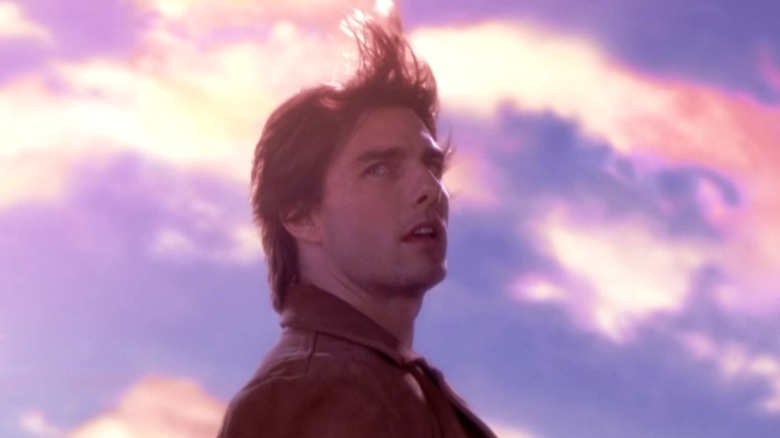
"Vanilla Sky" is the type of baffling arthouse film that immediately makes you want to look up an interview with the director to figure out what it all means. Unfortunately, if you want to hear how Cameron Crowe interprets his movie, you're not going to find any concise answers. In the commentary track that Crowe recorded, he revealed that there are five different ways that the film's final moments can be interpreted.
One of Crowe's explanations is that everything that happens in the film is a dream. This is signified by a parking sticker on David Aames' (Tom Cruise) car that reads February 30 — a date that does not exist. Another possibility is that the first part of the film is literal, but everything that takes place after Aames' car crash is part of his dream. Crowe also suggests that the film is part of a lucid dream that Aames has after leaping to his death and that the characters that are part of "tech support" are telling the truth.
Read this next: Sci-Fi Box Office Bombs That Deserve A Second Chance
The post The weirdest dream sequences in sci-fi movies appeared first on /Film.
0 Comments